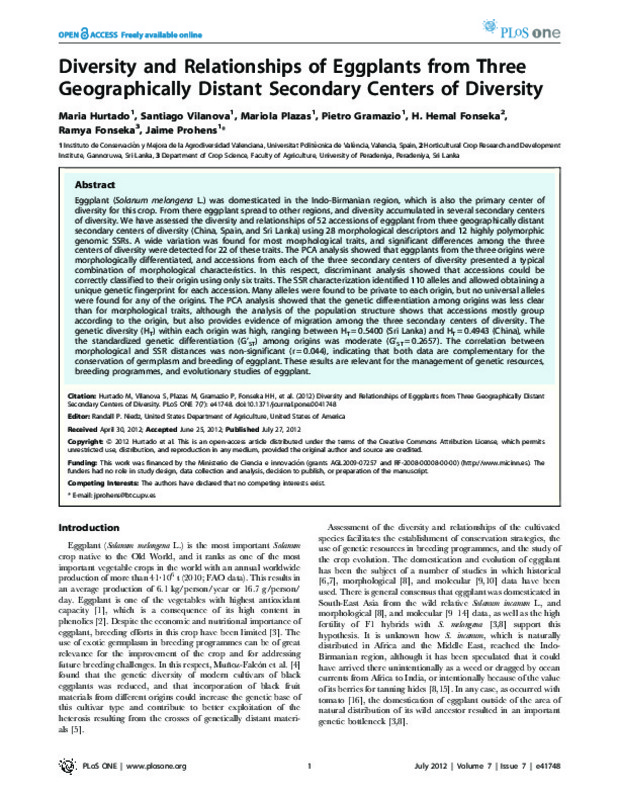JavaScript is disabled for your browser. Some features of this site may not work without it.
Buscar en RiuNet
Listar
Mi cuenta
Estadísticas
Ayuda RiuNet
Admin. UPV
Diversity and relationships of eggplants from three geographically distant secondary centers of diversity
Mostrar el registro completo del ítem
Hurtado Ricart, M.; Vilanova Navarro, S.; Plazas Ávila, MDLO.; Gramazio, P.; Fonseka, HH.; Fonseka, R.; Prohens Tomás, J. (2012). Diversity and relationships of eggplants from three geographically distant secondary centers of diversity. PLoS ONE. 7:41748-41748. https://doi.org/10.1371/journal.pone.0041748
Por favor, use este identificador para citar o enlazar este ítem: http://hdl.handle.net/10251/38851
Ficheros en el ítem
Metadatos del ítem
| Título: | Diversity and relationships of eggplants from three geographically distant secondary centers of diversity | |
| Autor: | Hurtado Ricart, María Gramazio, Pietro Fonseka, H. Hemal Fonseka, Ramya | |
| Entidad UPV: |
|
|
| Fecha difusión: |
|
|
| Resumen: |
Eggplant (Solanum melongena L.) was domesticated in the Indo-Birmanian region, which is also the primary center of diversity for this crop. From there eggplant spread to other regions, and diversity accumulated in several ...[+]
|
|
| Palabras clave: |
|
|
| Derechos de uso: | Reconocimiento (by) | |
| Fuente: |
|
|
| DOI: |
|
|
| Editorial: |
|
|
| Versión del editor: | http://dx.doi.org/10.1371/journal.pone.0041748 | |
| Código del Proyecto: |
|
|
| Agradecimientos: |
This work was financed by the Ministerio de Ciencia e innovacion (grants AGL2009-07257 and RF-2008-00008-00-00) (http://www.micinn.es). The funders had no role in study design, data collection and analysis, decision to ...[+]
|
|
| Tipo: |
|









